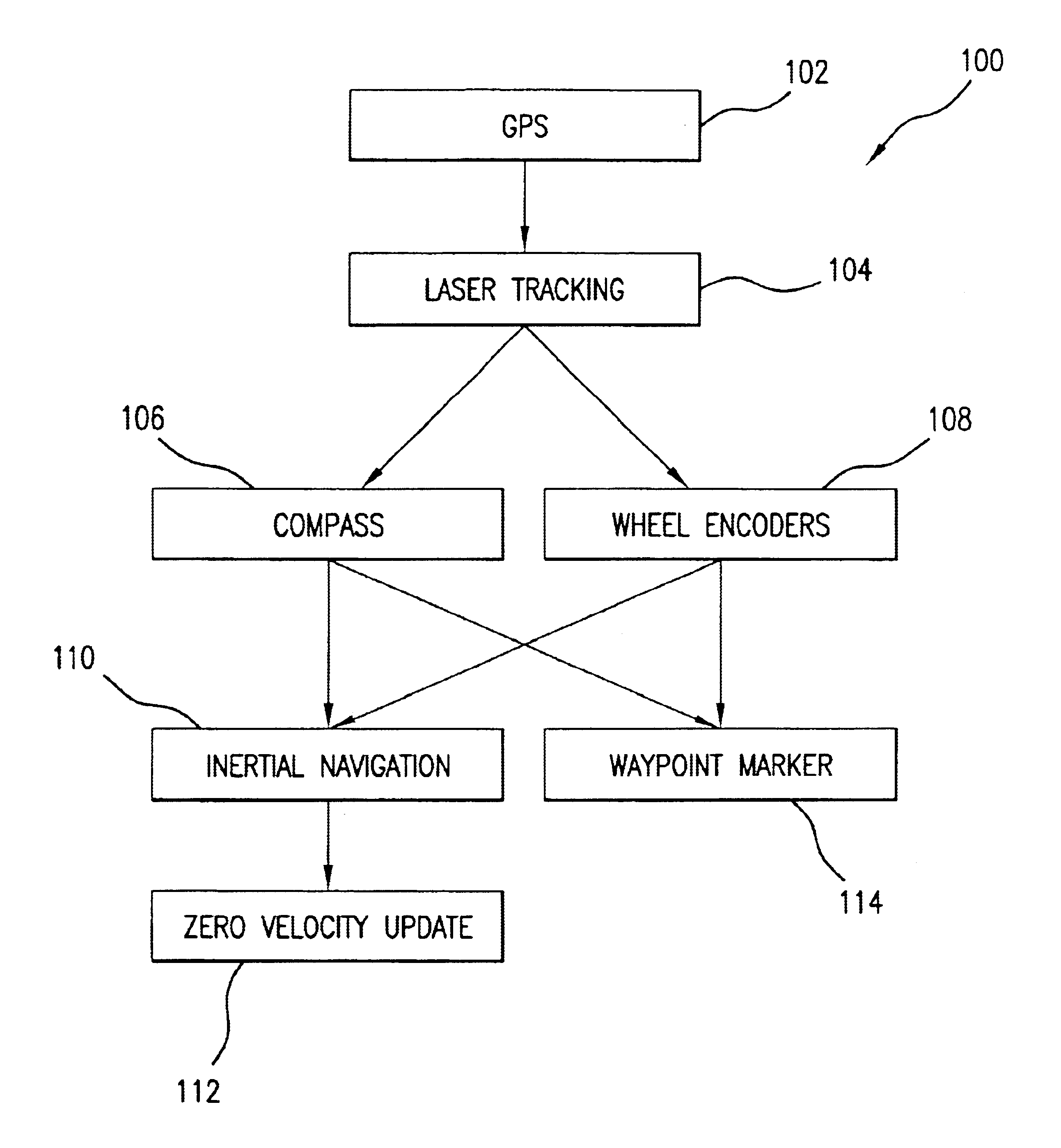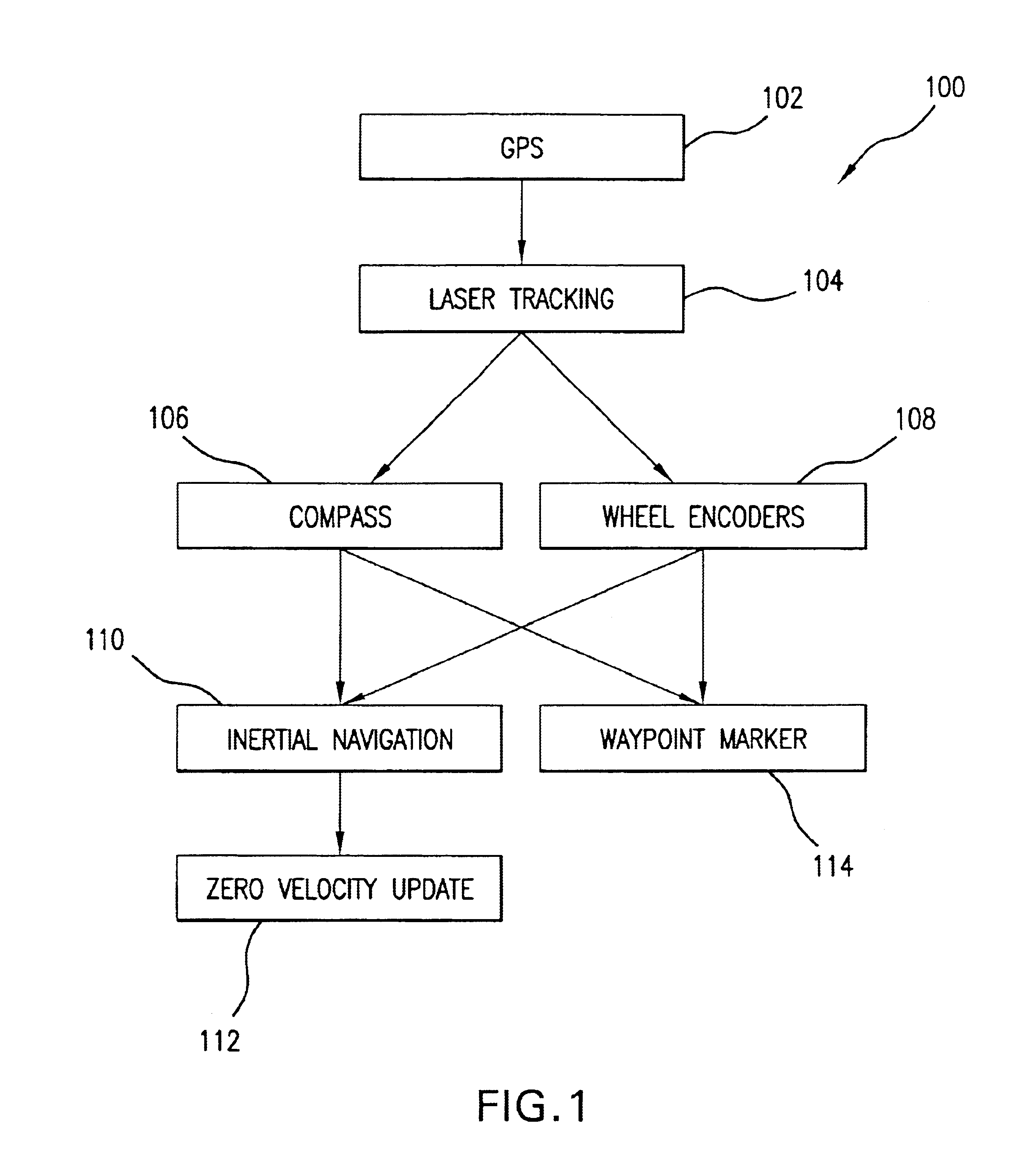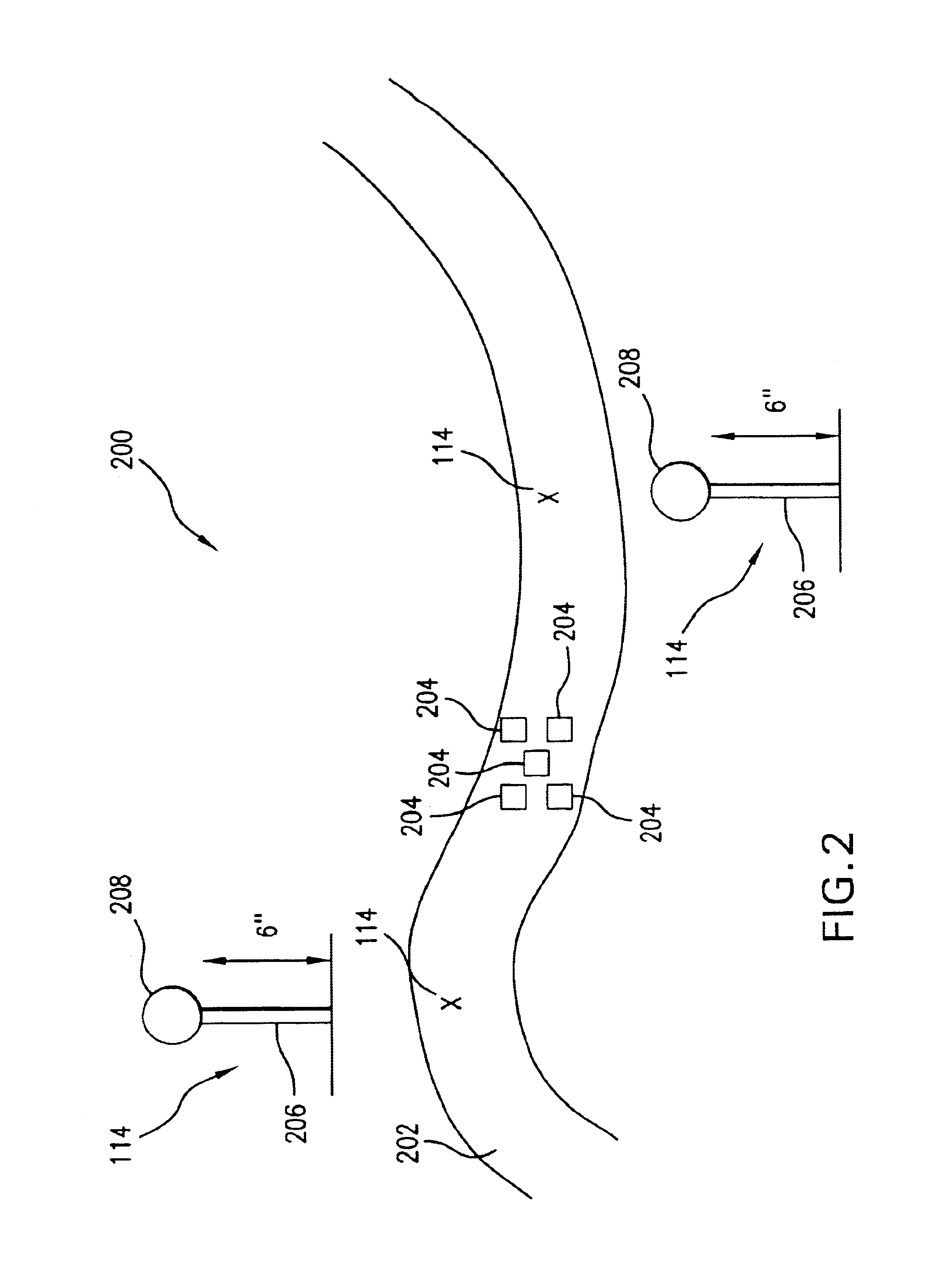Navigation of remote controlled vehicles
a remote control and vehicle technology, applied in the direction of navigation instruments, process and machine control, instruments, etc., can solve the problems of remote control vehicle misguidedness, dropout, insufficient navigation signal,
- Summary
- Abstract
- Description
- Claims
- Application Information
AI Technical Summary
Benefits of technology
Problems solved by technology
Method used
Image
Examples
examples
Tele-Operation Requirements
In one specific embodiment, the following may be representative of navigational requirements for landmine applications. The remote control system shall allow remote control of MDVs at all speeds up to 10 kph in mission execution mode. An administrative movement mode shall allow remote control of the vehicles at all speeds up to 40 kph. The remote control system shall provide for safe and effective remote operation of the vehicles. A maximum of three remote control systems shall be capable of simultaneous operation to support echelon movement of MDVs and up to three control vehicles. The system shall be capable of maintaining five meter minimum separation among MDVs, and 25 meter minimum separation from MDVs to control vehicles. The system shall be capable of controlling vehicles at non-line-of-sight distances of at least 300 meters. The system shall provide fail-safe features to minimize hazards from any failed tele-operation of the system.
First GPS Based ...
PUM
 Login to View More
Login to View More Abstract
Description
Claims
Application Information
 Login to View More
Login to View More - R&D
- Intellectual Property
- Life Sciences
- Materials
- Tech Scout
- Unparalleled Data Quality
- Higher Quality Content
- 60% Fewer Hallucinations
Browse by: Latest US Patents, China's latest patents, Technical Efficacy Thesaurus, Application Domain, Technology Topic, Popular Technical Reports.
© 2025 PatSnap. All rights reserved.Legal|Privacy policy|Modern Slavery Act Transparency Statement|Sitemap|About US| Contact US: help@patsnap.com



